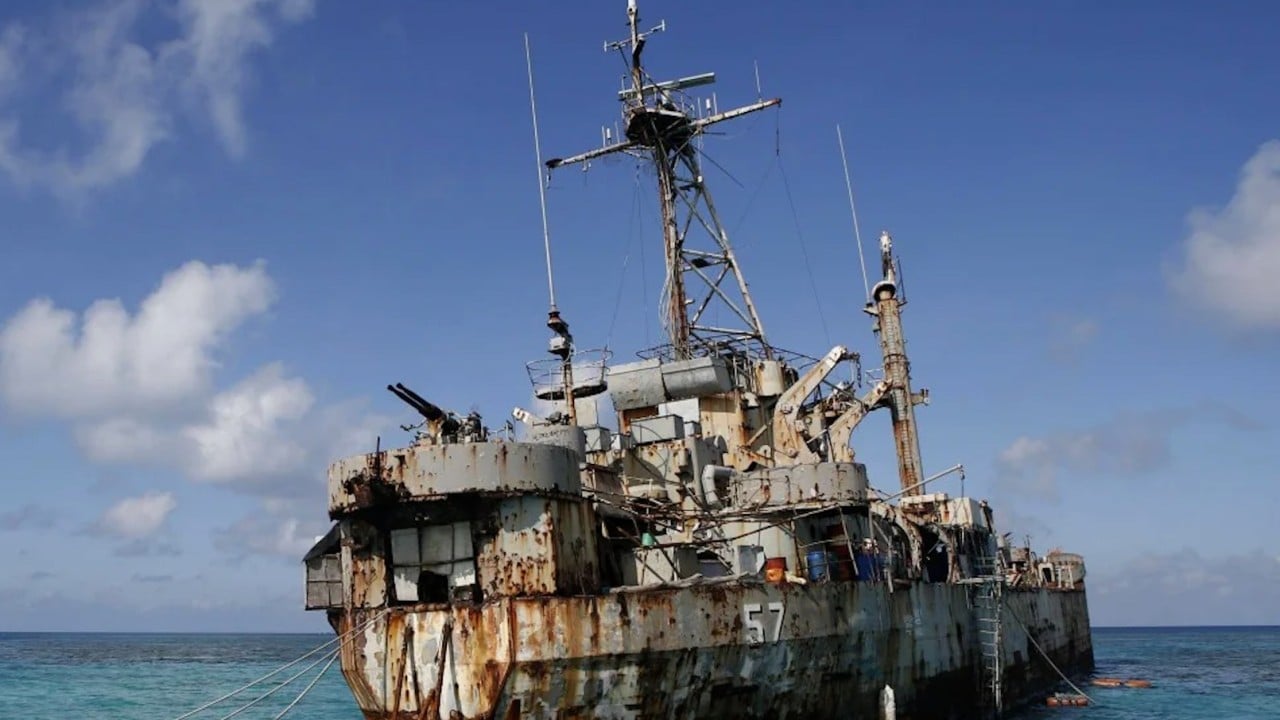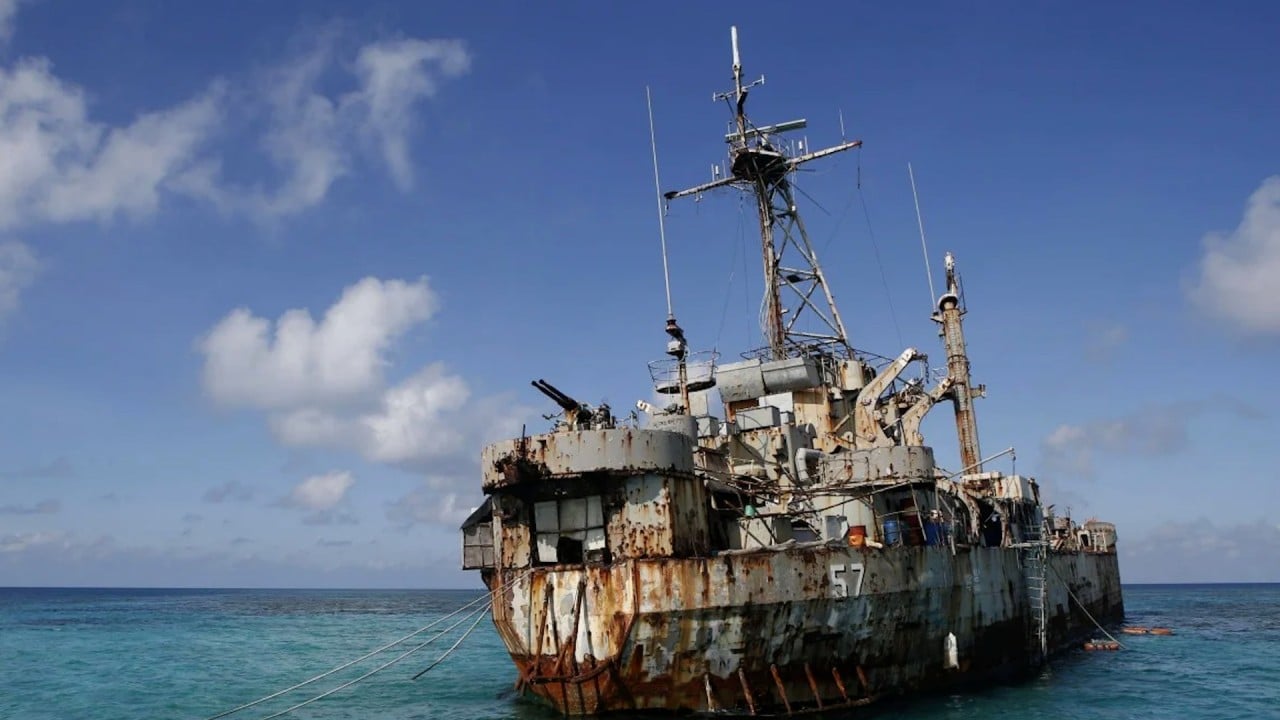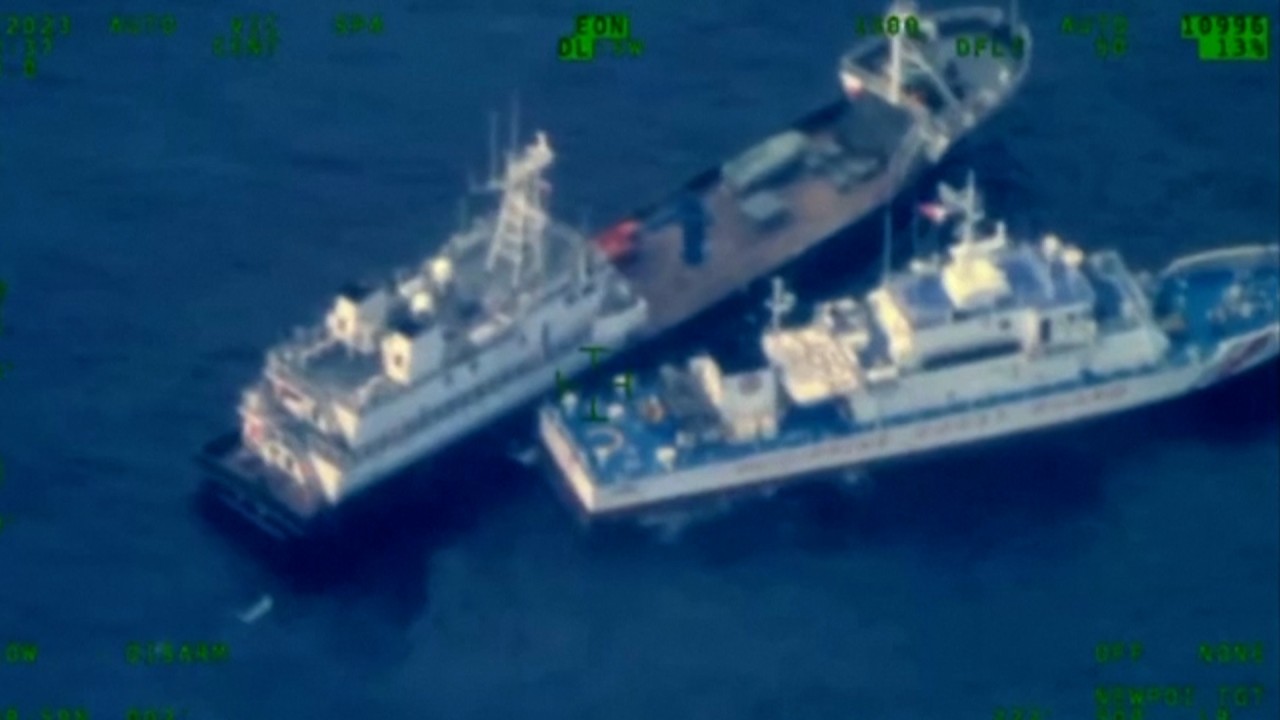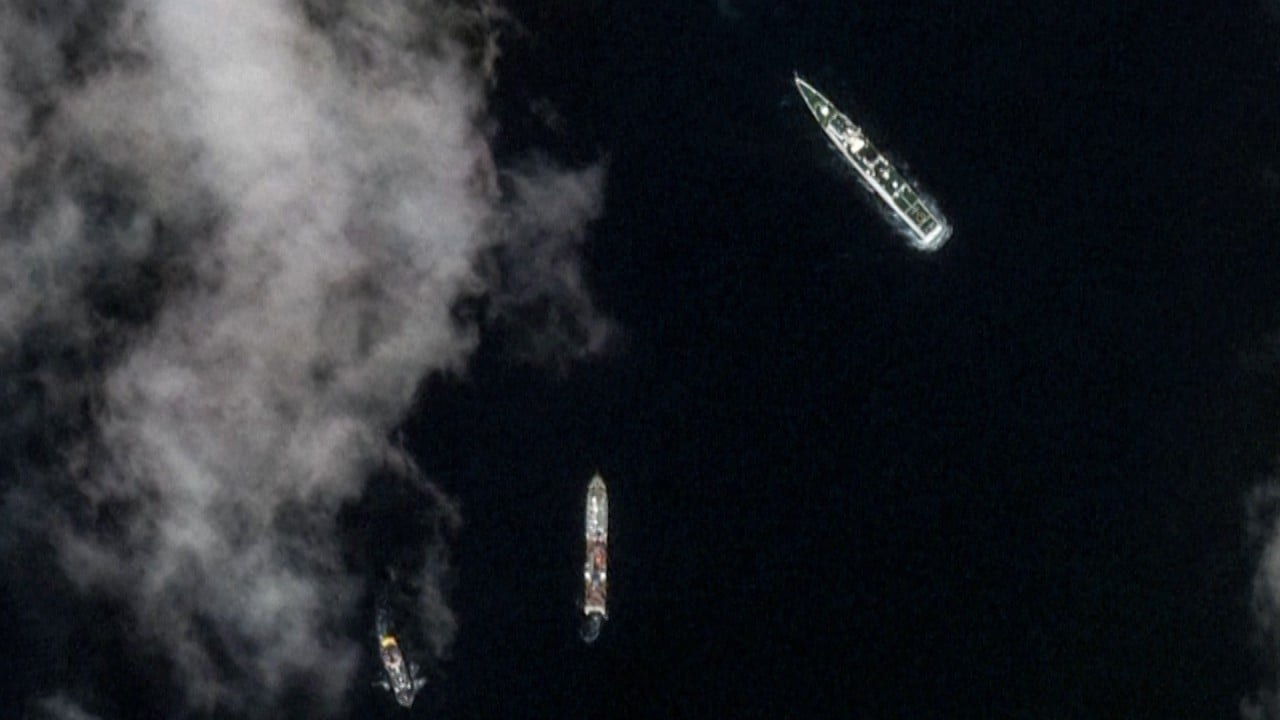China has been investing heavily in scientific research in the South China Sea in recent years, opening up a new front in its push to establish sovereignty in the areas as tensions with other claimant countries have escalated.
One of the clearest cases has emerged in recent months with a Chinese study reporting on the degradation of an ecosystem around a Philippine-controlled reef.
That research was soon followed by a separate and contrasting study that described the “excellent” environmental quality of a Beijing-controlled outcrop.
Where were the surveys carried out?
The first study was conducted between April and June near Second Thomas Shoal, where the Philippine navy grounded the warship BRP Sierra Madre in 1999 to serve as an outpost and shore up its sovereignty claims over the area.
The shoal has been a flashpoint between China and the Philippines, with the Chinese coastguard intercepting a Philippine resupply mission to the shoal in June.
In its report released on July 8, China’s Ministry of Natural Resources concluded that the BRP Sierra Madre had “seriously damaged the diversity, stability and sustainability of the coral reef ecosystems”.
“The Philippines should remove the warship and eliminate the source of the pollution to avoid persistent and cumulative harm to the coral reef ecosystem of Renai Reef,” the ministry said, referring to the reef by its Chinese name.
Two days later, the Ministry of Ecology and Environment released the results of a separate survey of marine conditions at Scarborough Shoal, finding the area in good health with a rich range of reef-building coral.
What vessels were used in the surveys?
It is not clear exactly which ships were sent to do the surveys but public information shows that two Chinese research vessels were spotted in the South China Sea between April and June.
One was the research vessel Shen Kuo, named after a Chinese geographer and cartographer from the Northern Song dynasty (960-1127). It went into service in 2018 and carried out deep-sea exploration missions, including at the world’s deepest point, the Mariana Trench.
The ship left Guangdong in southern China on April 19 and proceeded to the eastern part of Luzon in the northern Philippines before being spotted on April 25 in the waters off Rapu-Rapu Island, Albay, according to the Manila Bulletin and the Armed Forces of the Philippines.
On a maritime surveillance flight, the Philippine Air Force photographed the vessel lowering unidentified equipment, “probably for scientific research or studies”.
On April 28, the Philippine military said it had monitored the “unauthorised” presence of the Shen Kuo near Catanduanes, an island on the northeastern edge of the Philippine archipelago.
The vessel was also seen on May 1 in Basco, Batanes, the country’s northernmost province.
After that, there is little public information about where it went until May 20, when it was reported by the VesselFinder tracker as leaving the port of Shekou in Shenzhen, Guangdong province, and finally arriving in waters between Hong Kong and Macau on may 21.
What do we know about the other ship?
On April 21, the Nan Feng sailed from Xinzhou wharf in Guangzhou to monitor, survey and evaluate biological resources in the South China Sea.
“The purpose of this survey was to understand the composition and distribution of biological resources in the key areas of the South China Sea,” according to the fishery academy.
The Chinese research vessel, Ke Xue San Hao, was spotted surveying the reefs and shoals west of the Philippine island of Palawan from July 26, said Sealight, a research team of the Stanford University, citing satellite images.
The Ke Xue San Hao first entered into service in 2006 for the Institute of Oceanology with the Chinese Academy of Sciences and underwent a 20-day maintenance stint in September last year.
What other maritime survey equipment has China been developing?
China has been upgrading and developing technology for deep-sea exploration and use in maritime surveys.
In April, state broadcaster CCTV said a research team from Northwestern Polytechnical University had developed soft-body submersibles designed to resemble manta rays and move in similar ways.
The team started monitoring outbreaks of species in the South China Sea – such as the crown-of-thorns starfish which threatens coral reefs by feeding on them – earlier this year.
Around the same time, China’s first multifunctional scientific research and archaeological vessel officially docked in Guangzhou, state broadcaster CGTN said in April.
It said the vessel could conduct deep-sea scientific investigations and excavate cultural relics, as well as carry out scientific research in polar sea areas in summer using bidirectional ice-breaking. The ship is expected to be delivered in early 2025.
Its construction started in June last year and it cost around 800 million yuan (US$112 million).
On May 24, China’s first integrated island and reef geological research vessel, Haiyang Dizhi-26 (Ocean Geology 26), was officially commissioned in Hainan, according to China News Service.
The multifunctional vessel was equipped with an operation support system suited to oceanic engineering exploration, marine energy and mineral research, and comprehensive exploration of South China Sea natural resources, CNS said.






